Set Back Distance
While designing a horizontal alignment, sight distance along the inner side of the curve should also be considered.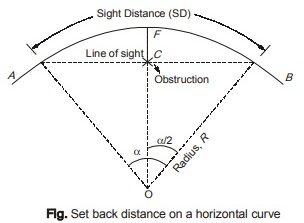 Sometimes sight distance along the inner side is obstructed due to building, trees or cut slopes etc. Then, to provide adequate sight distance, either the obstruction should be removed or horizontal alignment will have to be changed. It becomes necessary to provide sufficient clearance ‘or set back distance’ on inner side of horizontal curve as shown in figure below.
Sometimes sight distance along the inner side is obstructed due to building, trees or cut slopes etc. Then, to provide adequate sight distance, either the obstruction should be removed or horizontal alignment will have to be changed. It becomes necessary to provide sufficient clearance ‘or set back distance’ on inner side of horizontal curve as shown in figure below.
As we have discussed earlier, safe stopping sight distance should be available at every stretch of highway. Thus, it is also ensured that safe value of stopping sight distance and overtaking sight distance are provided at the road.
In the figure, distance CF is our required set back distance. It depends upon the following factors :
(a) Required sight distance, S
(b) Radius of curvature, R
(c) Length of curve, LC which may be greater or lesser than sight distance.
There are two cases in the calculation of setback distance:
Case-1: When the length of a horizontal curve is greater than the sight distance (LC > SD)
(a) For Single Lane:
Let, M is the setback distance and sight distance (SD) is measured along the centre line, then the setback distance from the centre line of road is given by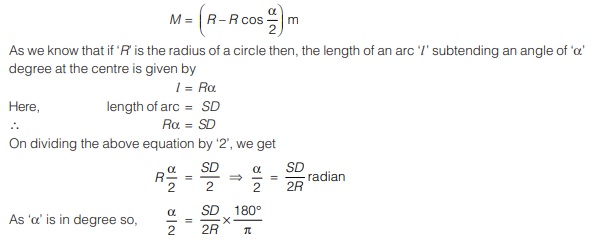
(b) For Multi Lane:
Let 2d is the total width of a lane, then setback distance from the centre line of road having only two lane is given as
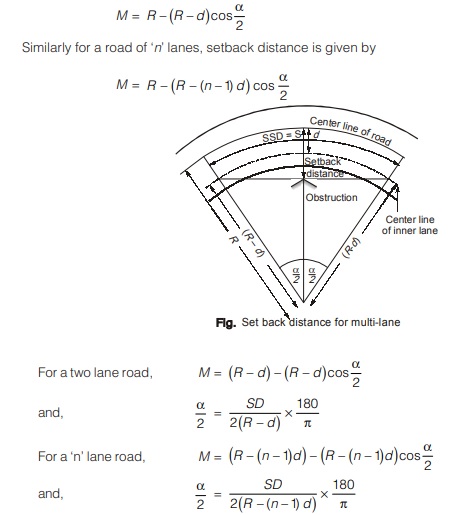
Case-2 : When the length of a horizontal curve is less then the sight distance (LC < SD).
(a) For Single Lane:
Figure shows the setback distance from the centre line of the road i.e. AC.
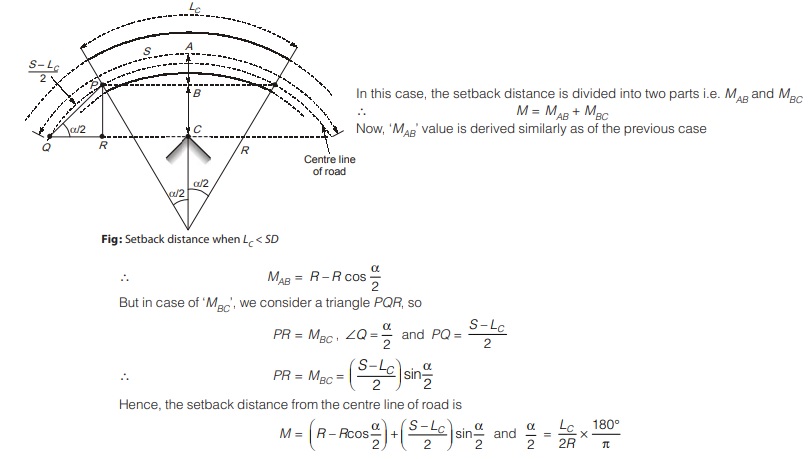
(b) For Two Lane:
Setback distance from the centre line of the road is shown in the Figure.
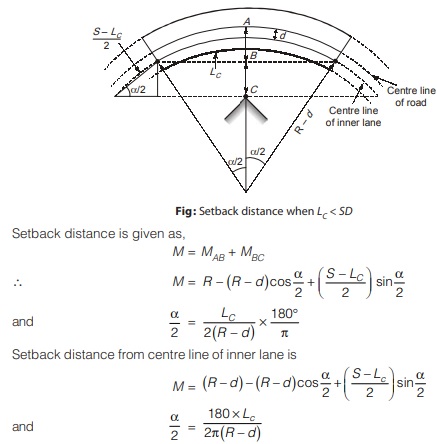
Grade Compensation at Curves on Hill Roads
When there is a horizontal curve in addition to gradient in longitudinal direction then there will be increased resistance to traction due to both curve and gradient. Therefore, it is necessary to compensate the gradient at horizontal curve.
Grade compensation as taken is minimum of 30 + R / R% or 75 / R %, where ‘R’ is the radius of curve in
Compensated gradient = Gradient – Grade compensation
<< Previous | Next >>
Must Read: What is Highway Engineering?

